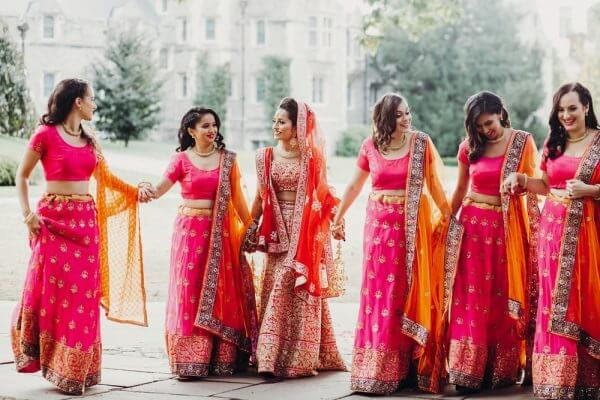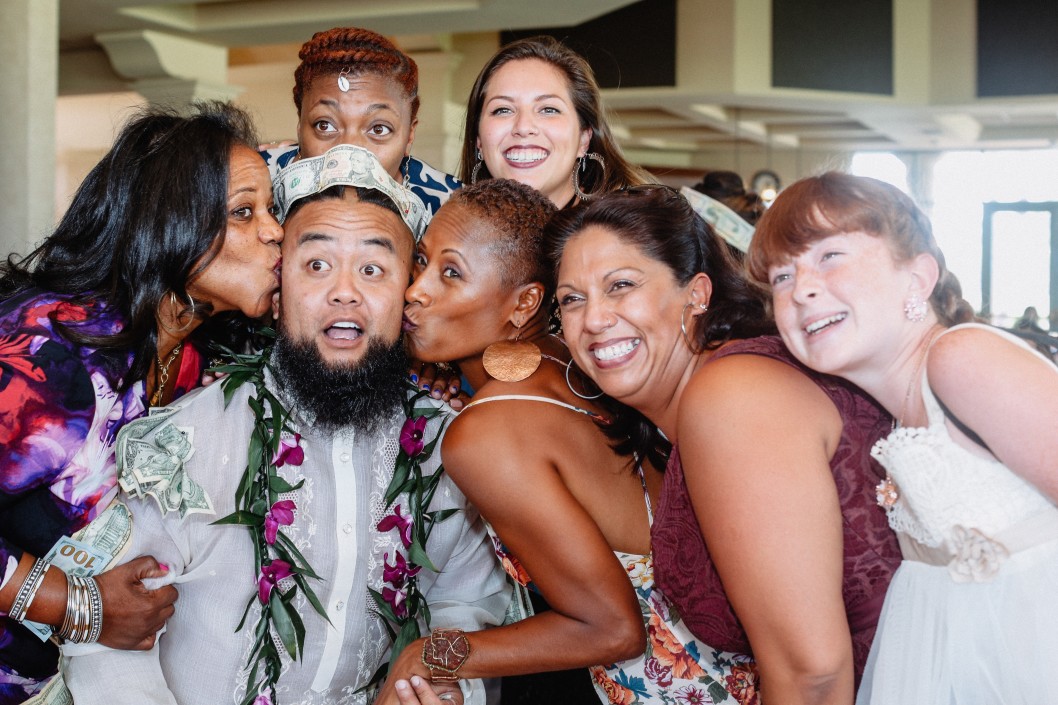Wedding Traditions From All Over The World


Here’s a list of some of our favourite wedding traditions from across the globe (thanks to easywedding) – and even if you’re not of a certain religion or ethnicity, there’s no reason why you can’t incorporate them into your big day!
The Money Dance (Poland)
The Money Dance or Dollar Dance first came to prominence in the early 20th Century, and is believed to have evolved from a folk dance performed by couples married during Europe’s harvest season. Traditionally, the bride wears a purpose-made apron over her wedding dress, and guests must then pin money to her in exchange for a dance. Like most traditions, there is an order of etiquette that should be observed; the groom being first, followed by the father of the bride, relatives then close friends. The Money Dance is found in many cultures and, though traditionally it involves male guests paying to dance with the bride, these days many female guests will do the same for a dance with the groom.
Polterabend (Germany)
Plate-throwing is a custom synonymous with lively Greek wedding receptions, but they aren’t the only ones who know how to have a good time smashing plates. In fact, the German tradition of Polterabend is alleged to be older, originating in a time when it was customary to smash a clay altar immediately following a sacrifice to the Germanic gods. Traditionally, Polterabend takes place on the evening before the actual wedding, and guests are expected to bring small gifts, as well as the obligatory plate or flowerpot for throwing. The action of smashing either is thought to bring luck to the couple and while the pre-wedding party is still popular in some parts of Germany and the US, however many modern brides now incorporate the tradition into the wedding reception instead.
Varmala (India)
Indian weddings are full of inspiring traditions and rites, many of which have specific meanings. Perhaps the best known is the Mehndi ceremony where the bride-to-be’s hands and feet are painted with intricate henna tattoos. Another lovely custom is that of Var Mala, which refers to the gifting of floral garlands between husband and wife after the initial vows have been exchanged. This is one of the most important rites in the entire wedding ceremony, representing the bride’s acceptance of the groom as her husband for life!
Planting a tree for the bride (from the former Czechoslovakia)
Need another excuse for a night with the girls before you get married? In Czechoslovakia, preparations for the bride start early and continue right up until the eve of her wedding. A small, celebratory party is held by close female friends and family, during which a tree is planted in the bride’s garden, then decorated with coloured ribbons and eggshells. Legend dictates that the bride will live for as long as the tree flourishes. Modern interpretations relate this to the life of the marriage, rather than that of the bride. Another lovely tradition is placing an infant in the bridal bed before the marriage to ensure fertility.
Marrying on the half-hour (China)
From the land of Fung Shui comes the tradition of couples marrying on the half-hour rather than on the hour as it is said to bring luck to their marriage because they are marrying on an ‘upswing’ since the hands of the clock are moving upwards rather than downwards.
Blackening (Scotland)
You need to have a sense of humor to partake in the Scottish pre-wedding tradition of the Blackening which involves being covered in mud, muck and/or soot the day before your wedding. The tradition is thought to have originated in Scotland’s Orkney Islands, and involves both the bride and groom being smothered in a mixture of tar and feathers (but it could also be flour, eggs or curdled milk), then either tied to a tree or paraded through the town’s streets in humiliation. This rather messy tradition is meant to give the bride or groom a ‘taster’ of the humiliation that married life may bring.
The Lasso (Mexico)
Mexico’s rich heritage and ancient culture means that many of its most important ceremonies, such as weddings and funerals, are steeped in tradition and ornate ceremony. One such tradition fast gaining popularity in the West is the “lasso” – a white cord or ribbon, but usually an ornately decorated rosary, that is large enough to place around the shoulders of the bride and groom simultaneously. It symbolises the binding love and commitment between them. Customarily, the bride and groom each choose a ‘padrino’ (sponsor) to present the lasso at the start of the service. Once the service is over, the groom removes the ribbon and presents it to his new wife as a token of his newly confirmed love for her.
The gift of 13 coins (Spain)
Whether pinned to an apron or sealed in a bag, there’s no mistaking the importance of monetary wedding offerings to various cultures. In Spain, it’s customary for the groom to present his bride with a bag containing thirteen gold coins on the eve of their wedding. The 13 coins represent Christ and his 12 Apostles. The bride must then carry her bag of gold coins during the ceremony. Some couples follow the older Roman custom of presenting one another with coins during the wedding ceremony; the bride a bag of silver, and the groom a bag of gold as a pledge of commitment and support to his bride.
Throwing a wine glass (Italy)
Italian weddings tend to be lavish affairs guided by religious customs and rites and several of these traditions are seeping into non Italian weddings, including the traditional coffee-laden wedding cake. Though the throwing or stomping on of glasses is generally associated with Jewish and Greek cultures, many Italian grooms uphold their tradition of throwing a wine glass at the wedding reception. The number of shattered glass shards is said to foretell the number of years the couple will remain happily wed and prosperous.
The wedding cake pull (Peru)
All the single ladies at a Peruvian wedding get to do something that’s far more fun than a bouquet toss, they get to perform the wedding cake pull! This involves charms being attached to ribbons that are placed in between the layers of the wedding cake. Before the cake is cut by the bride and groom, each single female guest must pull one ribbon. One of the ribbons is attached to a fake wedding ring and, it is said, that the single lady who pulls that ribbon will be the next to marry. It beats the jostle of the old bouquet toss hands down!





